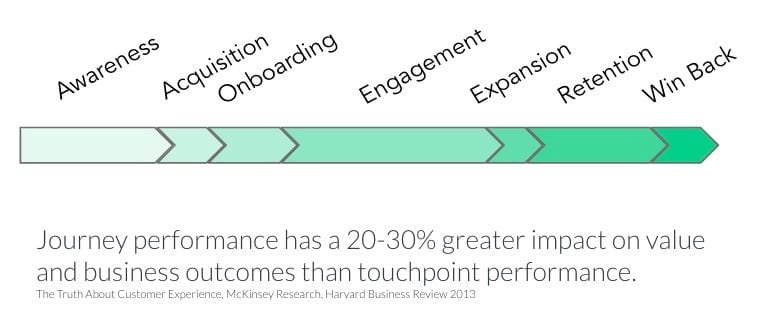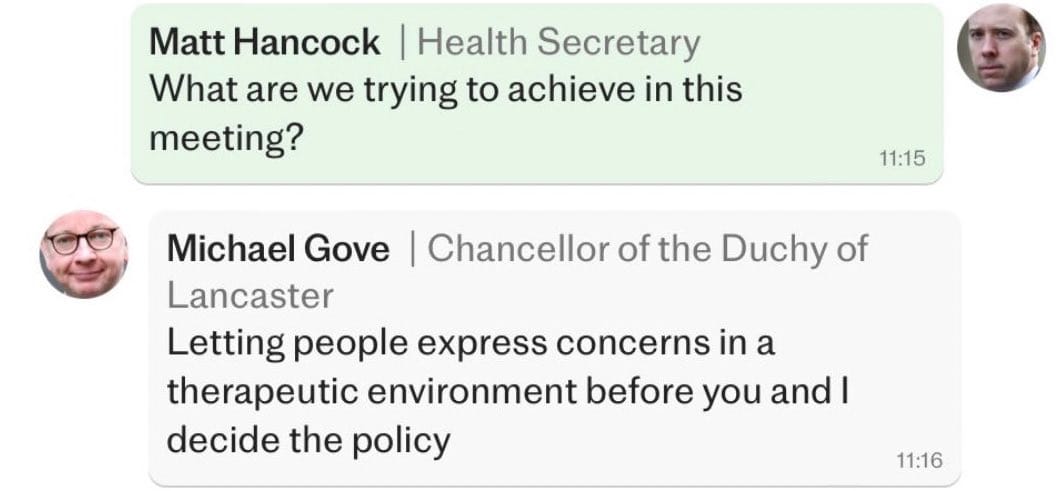Panic at the LLM
More AI angst, Substack’s network ambitions, curatorial narcissism
Thanks for reading. Had some scheduling snafus, so no episode of The Rebooting Show this week. Instead, I’m trying out a new format with an expanded version of the “recommendations” section. Let me know what you think by emailing me at brian@therebooting.com or hitting reply.
First up, a message from The Rebooting supporter House of Kaizen.


Last week, I participated in a workshop House of Kaizen partner Matt Cronin led with a group of publishers, including some readers of The Rebooting, to work through frameworks for expanding their subscription programs. What emerged was that connecting subscriber journey stages with specific, optimizable aspects of the marketing and product experience is a powerful toolkit for subscription teams to focus on what has the biggest long-term impact. Eric Hellweg of Mozilla’s Pocket. said: "House of Kaizen's framework was an incredibly helpful tool to align the entire organization on where we were hitting our marks and what areas needed attention."
House of Kaizen is holding a new workshop for publishers on March 20 and 21, from 11am-1pmET both days. It is offering a 20% discount to The Rebooting’s readers. Use code REBOOTING at checkout for a discount on the $995 one-time cost of the workshop.

The Generalist is returning to Substack two years after leaving. Mario Gabriele notes that Substack has made great strides in the past year with shipping new features, most notably Recommendations. The biggest “feature” Substack offerings solo and micro-publishers is not having to think much at all about tech/platform. Substack is poised to become a new bundler for independent publications. Mario notes in a follow-up post digging into the Substack model that it is a tool, network and destination. From :
“Moving to Substack will allow us to focus on what we do best: writing thoughtful analysis about the future and bringing interesting people into conversation. By narrowing our focus, we can unlock higher quality in the places it matters most.”
The next evolution of Substack will be more about its role as network and destination rather than a Mailchimp + Memberful alternative. Substack is positioning itself more as a YouTube-like platform. There are upsides and downsides to casting your lot with a platform, particularly since Substack has shifted its focus from serving “writers” to now serving “readers and publishers.” Inevitably Substack will offer bundled subscriptions and the lines will blur about who exactly “owns” the customer/reader relationship – and maybe even ads. But as Mario points out, the publisher has the leverage of portability that has not existed on other platforms.
We’re discussing Substack’s role as a new bundler on this week’s episode of the People vs Algorithms podcast. Subscribe to get it on Thursday.

Kyle Chayka tackles the issue of curation at a time when there’s an oversupply of curation that’s another form of narcissism, a projection of the self, or more likely a preferred image of ourselves we wish the world to believe. Nobody’s life is like their Instagram. This is a different type of curation than the kind we got from magazines. From :
“Instead of GQ, people now get their opinions and their slang and their fashion sense from recordings of tastemakers chatting, a less formal and more intimate version of magazine curation, where teams of staff arduously assembled pages of stories to project a certain image of lifestyle.”
The problems of algorithmic recommendation systems is now apparent. But human-powered curation is more difficult. As podcaster and cultural curator Chris Black points out to Kyle, people go for what’s easy. I suspect we will enter a time when avoiding algorithmic/AI curation becomes a kind of lifestyle choice.

The Financial Times is expanding its micro-bundle FT edit app to the US. The app gives access to eight stories stories per day – as selected by the FT. The FT rolled out the app in the UK a year ago, and its expansion to the US is a sign that it has seen success. The app costs $5 per month (after an intro offer period), a far lower commitment than the $40 per month offered for full digital access.
The next chapter of publishing subscriptions will get more interesting. The current approaches are still very cookie cutter. Publishers with strong subscription-focused businesses will need to find new bundles that don’t threaten their core recurring revenue while also both drawing in new customers who aren’t ready to pay full freight and developing a paying relationship with a larger group.

Hashtag Labs is a full-service digital ad operations company, offering software and services that help publishers achieve their advertising-related revenue goals. I asked Hashtag Labs CEO John Shankman why programmatic advertising gets such a bad rap with publishers as a race to the bottom.
“In my opinion the notion that programmatic ads are traditionally equated to remnant at publishers is fair, but as the ad market evolves it seems like programmatic transactions will start to look more and more like direct (right now represented by the rise of the private marketplace). Ad buyers and sellers who are well versed in the technicalities of the digital ad supply chain will be able to successfully navigate the marketplace and trade high quality inventory for nicely priced ads as programmatic continues to become more premium.”

Rishad Tobaccowala sees a “debossificiation” arising from the changes to work culture combined with the drives to slim down corporate bloat. From :
“There is a rise in the need for leaders, guides, coaches, mentors, role-models, creators, and builders. Less of a clamoring for bosses, managers, controllers, monitors, evaluators, and paper pushers.”
For all the knocks of scale, it’s very hard to be efficient as a publishing business at a small size. You need to carry far higher infrastructure costs – humans, software, etc – that cannot be spread across a larger surface area. The efficiency era, combined with advancements in artificial intelligence and other technologies, hints at a future in which you can have efficiency without scale.

Every office is the same, no matter if it’s government, hospitals, the military or sports. Sometimes we think inter-office drudgery, politics, peacocking and pointless meetings is confined to the services sector. The recently released Whatsapp messages of the UK’s Covid era health secretary Michel Gove is a good reminder this is not the case.


The week in AI: Panic at the LLM
Humans are terrible at judging risk. If we were good at it, nobody would be scared of flying and instead would have trepidation at taking a car on a highway. We are not entirely rational creatures, which leaves us prone to moral panics.
AI has all the hallmarks of a “Reefer Madness”-style moral panic. This is mostly due to the rollout of ChatGPT and Berserk Bing, which use conversational interfaces to anthropomorphize the technology. Now, Microsoft president Brad Smith is on “60 Minutes” trying to reel in AI being defined as the robots enslaving us. “We need to recognize we’re talking to a machine,” he said. “It’s a screen, not a person.” True, although Microsoft and ChatGPT maker OpenAI, which Microsoft has backed with $10 billion, have architected these things to create the parlor trick that makes people believe they’re talking to a sentient being. As my mom would say, you lie in the bed you make.
As with most recent tech disruptions, publishing looks set to go first. Trade groups are already pulling the emergency alarm and suggesting blocking access to “scraping” bots that build the large language models that generative AI uses. Wired editor Gideon Lichfield has already set guidlines for how the publication will approach AI, which boils down to common sense. CNET’s layoffs are being absurdly connected to its experiments in AI that yielded rough results and a slew of bad press few people remember a couple weeks later. Genies tend not to return to bottles. CNET parent Red Ventures is moving CNET’s editor in chief into a new role at Red as the “svp of AI content strategy.” Doesn’t sound like Red is giving up. Most media chiefs will do the sensible thing when asked of AI and reply that they’re going to apply the tools to get more efficient and focus staff on higher value creation.
Tools are tools. Smith went on in his interview with Lesley Stahl to extoll how AI will be a productivity boon. Perhaps that’s where Microsoft should have begun, rather than raise the specter of hallucinatory Sydney trying to escape and massive eradication of jobs. History has proven time and again that these tech advances always cause a panic over job loss that ends up not happening broadly, as Marc Andreessen writes. The FT’s new AI editor isn’t in a panic over AI eradicating journalism jobs. Take it from The New York Times, which enjoys indulging in catastrophism: “The human capacity for original thought is keeping white-collar professionals employed, even as A.I. poses more of a threat to them than earlier advancements did.”
Smith believes AI regulation is “inevitable,” which will lock in the competitive advantage of the biggest companies at a time of concern over market concentration in tech. Go figure.
If history is a judge, the early uses of AI in the publishing process will be duds. BuzzFeed’s AI-generated quizzes got a stock boost last month, only to give back more than half its gains since then. The bedwetting over AI leading to a flood of SEO content to gum up search results skips the fact that the current search results are already flooded with SEO content. Over at, Troy believes we’ll see an AI-version of “Snow Fall,” the New York Times interactive project a decade ago that seemed to herald a new era of digital storytelling, only for it to not happen. AI could end up having more impact outside content creation, allowing publishers more efficient code, design and sales. And in the big picture this is small potatoes compared to the impacts on everything from detecting cancer to fighting 21st century wars.

Get in touch if you’d like to discuss sponsorships of The Rebooting. This quarter, we’ve worked with great clients like House of Kaizen, HTL Labs, Omeda, Zephr, Glide, Impact and the Webbys. Let’s work together.




